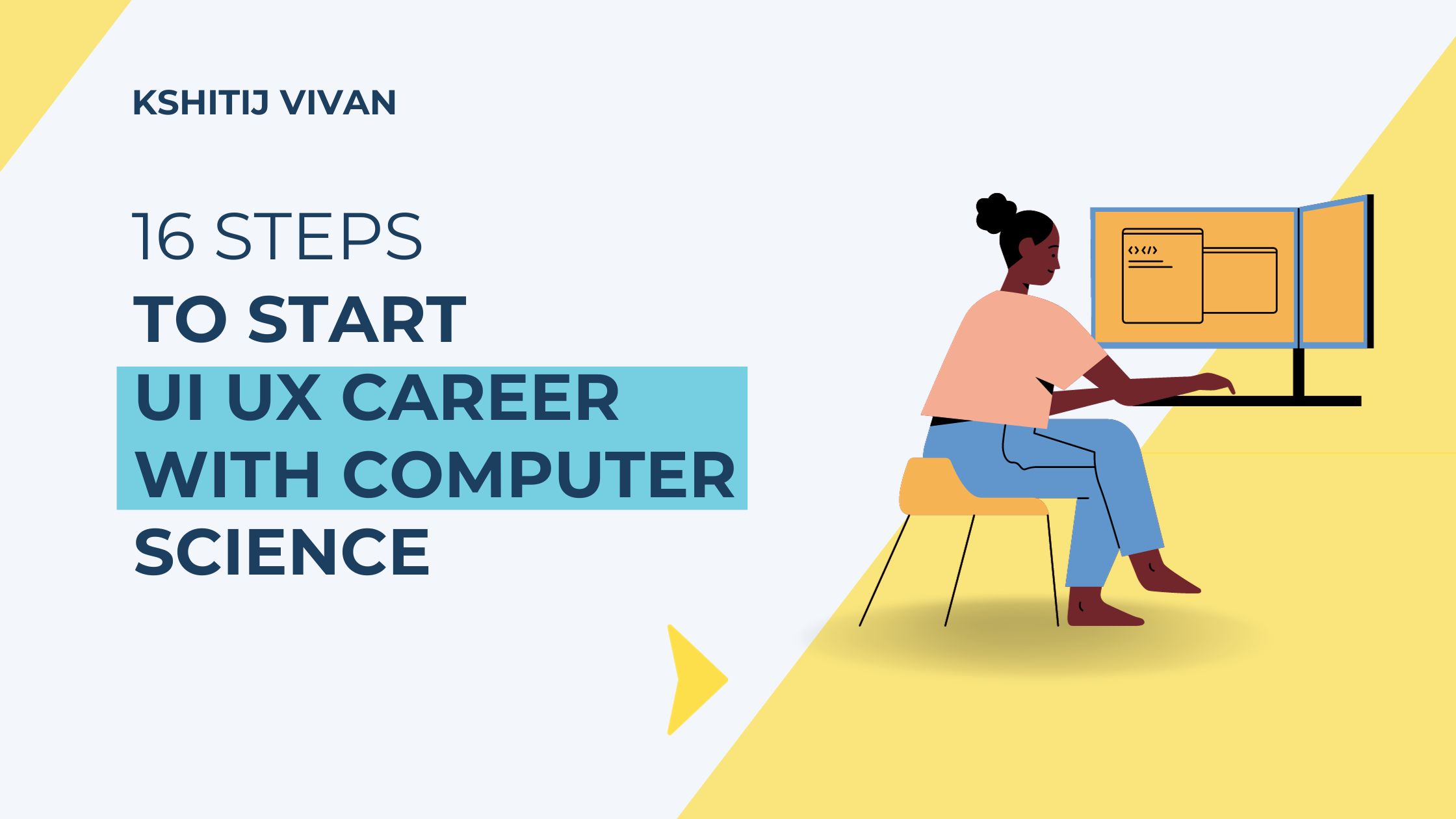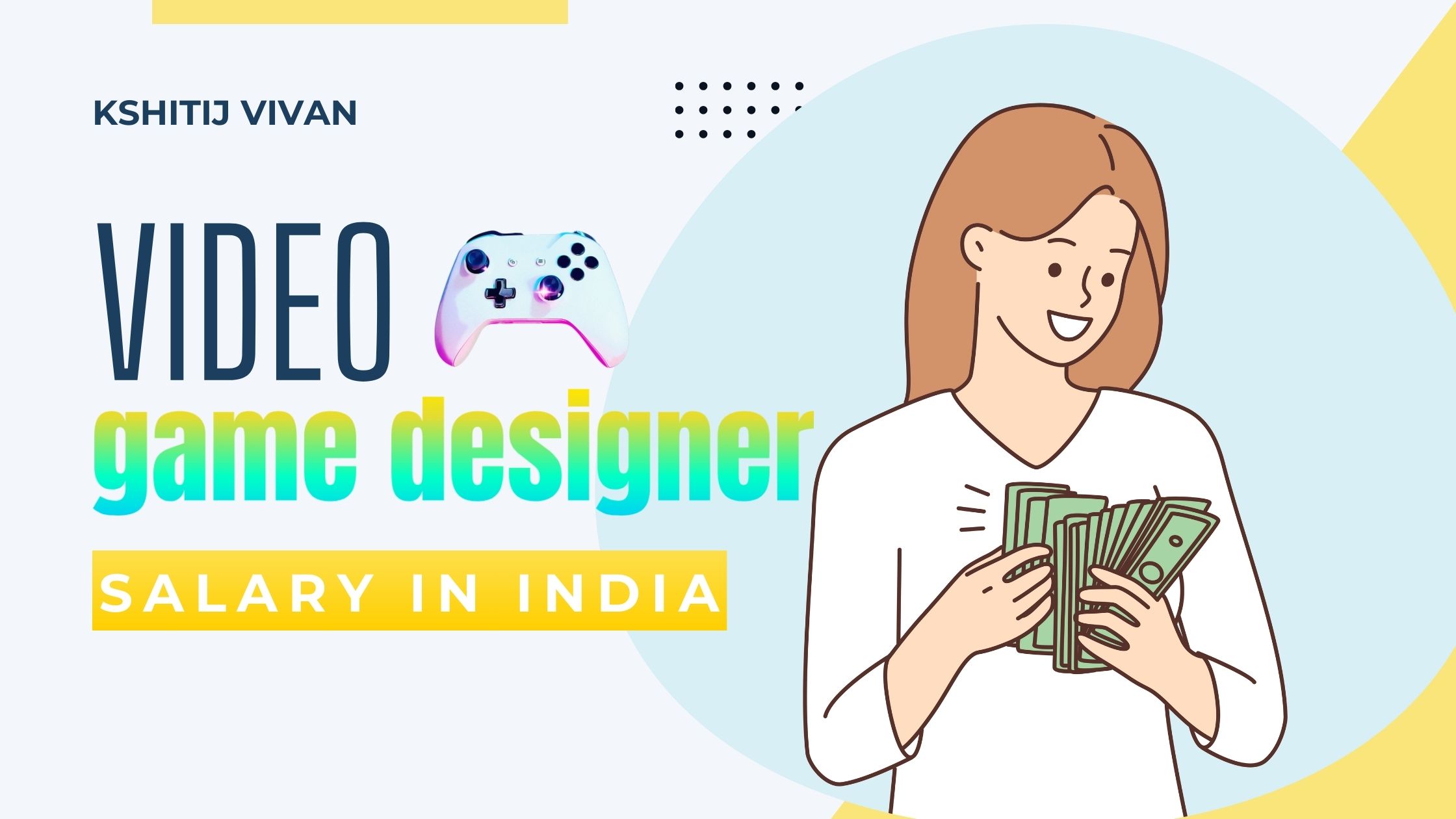
How can I start a UI/UX Designer career with a Computer Science Degree?
In the fast-evolving landscape of technology and user experience, leveraging a computer science degree for a UI/UX career is a strategic move.
we are going to see what is UI UX design career, how to start as a computer science degree holder,
so, Let's see the essential elements and strategies for success.
Brief Overview of UI/UX Design
UI/UX design isn't merely about aesthetics; it's a seamless fusion of art and science, aiming to enhance user satisfaction and product usability. This field plays a pivotal role in shaping digital interactions, from websites to mobile applications.
The Growing Demand for UI/UX Designers
With the digital realm expanding exponentially, the demand for skilled UI/UX designers is at an all-time high. Companies are recognizing the pivotal role these professionals play in ensuring user delight and engagement, making it a lucrative career choice.
Understanding the Basics
User Interface (UI) involves the visual elements users interact with, while User Experience (UX) encapsulates the overall user journey. A UI/UX designer crafts a harmonious marriage of these elements, ensuring a delightful and seamless digital experience.
Key Differences Between UI and UX
While UI focuses on visual elements, UX extends to the user journey, including usability, accessibility, and emotional engagement. Understanding these distinctions is crucial for a holistic approach to design.
The Role of a UI/UX Designer in Product Development
UI/UX designers collaborate closely with developers, ensuring the aesthetic and functional aspects align seamlessly. Their role spans wireframing, prototyping, and creating visually appealing interfaces that enhance the overall user experience.
Benefits of Having a Computer Science Degree
Strong Foundation in Technology
A computer science background provides a robust technological foundation, allowing UI/UX designers to comprehend the intricacies of system architecture and functionality. This knowledge proves invaluable in creating designs that align with technical constraints.
Problem-Solving Skills
Computer science graduates are adept problem solvers. This skill translates seamlessly into UI/UX design, where identifying and resolving user pain points is a continual process.
Coding Knowledge and its Relevance
Coding knowledge empowers UI/UX designers to communicate effectively with development teams. It facilitates a collaborative environment, streamlining the transition from design concepts to functional products.
Essential UI/UX Skills for Computer Science Graduates
User Research and Analysis
UI/UX designers must grasp user behaviors and preferences. Rigorous research and analysis skills help in deciphering user needs and tailoring designs accordingly.
Wireframing and Prototyping
Creating wireframes and prototypes is the backbone of UI/UX design. Computer science graduates can leverage their logical thinking to construct prototypes that align with both user needs and technical feasibility.
Visual Design Principles
Understanding visual design principles is paramount. Computer science graduates can apply their analytical mindset to create visually appealing designs that enhance user engagement.
Interaction Design
Interaction design focuses on user interactions with a product. Computer science graduates, armed with an understanding of system interactions, can design interfaces that are intuitive and user-friendly.
Let us see how to start a career in UI UX design with a computer science degree.
How To Start a UI/UX Designer Career With a Computer Science Degree?
Building a Strong Portfolio
A well-crafted portfolio is your professional showcase. It provides a snapshot of your skills, projects, and problem-solving abilities, making it a crucial tool in securing UI/UX opportunities.
Showcasing Relevant Projects
Tailor your portfolio to showcase projects that align with the UI/UX roles you aspire to. Highlight the challenges faced, solutions implemented, and the impact on user experience.
Incorporating Problem-Solving in Portfolio Pieces
Demonstrate your problem-solving prowess through portfolio pieces. Showcase how you tackled design challenges, adapted to user feedback, and iteratively improved your designs.
Tailoring Portfolio to Job Applications
Customize your portfolio for each job application. Emphasize aspects of your work that directly relate to the requirements of the role, showcasing your versatility and adaptability.
Gaining Practical Experience
Practical experience is invaluable. Seek internships or freelancing opportunities to gain hands-on experience, applying theoretical knowledge to real-world scenarios.
Collaborating on Real Projects
Collaborate with developers and other stakeholders on real projects. This experience not only adds to your portfolio but also provides insights into the collaborative nature of UI/UX work.
Networking in the UI/UX Community
Connect with fellow designers, attend industry events, and participate in online forums. Networking opens doors to opportunities and exposes you to the latest trends and best practices in UI/UX design.
Attend Workshops and Conferences
Stay updated by attending UI/UX workshops and conferences. These events offer insights into emerging technologies, design methodologies, and the experiences of seasoned professionals.
Learning UI/UX Tools
Mastering design tools is a cornerstone of UI/UX design. Familiarize yourself with popular tools like Figma, Sketch, and Adobe XD to efficiently translate your design concepts into reality.
Importance of Prototyping Tools
Prototyping tools are essential for creating interactive models. Understand the significance of tools like InVision or Proto.io in refining and validating your design concepts.
Mastering Graphic Design Software (e.g., Photoshop, Illustrator)
Graphic design software is a UI/UX designer's palette. Mastering software like Photoshop and Illustrator enhances your ability to create visually stunning and cohesive designs.
Understanding User-Centered Design
Principles of User-Centered Design
At the core of UI/UX is a dedication to user needs. Embrace principles such as empathy, user feedback, and iterative design to create products that resonate with your audience.
Conducting Usability Testing
Usability testing is your compass in refining designs. Regularly conduct tests to gather feedback, identify pain points, and ensure your designs align with user expectations.
Iterative Design Process
UI/UX design is iterative. Embrace an iterative approach, refining your designs based on feedback and evolving user needs. This cyclical process ensures continuous improvement.
Additional UI/UX Courses and Certifications
Online Courses and Platforms
Explore online courses on platforms like Coursera, Udacity, and LinkedIn Learning. These courses offer specialized knowledge and certifications to bolster your profile.
Certifications to Boost Your Profile
Earn certifications in relevant UI/UX areas. Certifications act as credentials, showcasing your commitment to continuous learning and mastery of specific design principles.
Staying Updated with Industry Trends
The field of UI/UX is dynamic. Stay abreast of industry trends by following design blogs, joining online communities, and attending webinars. A cutting-edge approach sets you apart in a competitive landscape.
Showcasing Soft Skills
Effective Communication
UI/UX designers must communicate complex ideas. Hone your communication skills to articulate design concepts, collaborate with teams, and receive and implement feedback effectively.
Collaboration with Cross-Functional Teams
Collaboration is key. UI/UX designers work with developers, product managers, and other stakeholders. Cultivate collaborative skills to ensure a harmonious design integration into the overall product development process.
Adaptability and Openness to Feedback
Embrace change and feedback. UI/UX design is a dynamic field; adaptability and a willingness to iterate based on feedback are essential for growth and success.
Crafting an Impactful Resume
Tailoring Resume for UI/UX Roles
Your resume is your first impression. Tailor it for UI/UX roles, emphasizing relevant skills, experiences, and projects. Highlight how your computer science background enriches your approach to design.
Highlighting Relevant Skills and Projects
Detail specific UI/UX skills you've mastered. Highlight relevant projects, showcasing your ability to address design challenges and deliver impactful solutions.
Including Achievements and Impact
Quantify your impact. If your designs led to improved user engagement or streamlined processes, quantify and highlight these achievements. Numbers add substance to your resume.
Preparing for UI/UX Interviews
Common Interview Questions
Prepare for common UI/UX interview questions. Anticipate queries about your design process, how you handle feedback, and your approach to problem-solving.
Networking in the UI/UX Community
Joining Online Forums and Communities
Connect with the UI/UX community by joining online forums like Behance, Dribble, and Reddit. Engage in discussions, seek advice, and share your insights.
Attending Meetups and Events
Physical or virtual meetups and events provide networking opportunities. Attend conferences, workshops, and meetups to expand your network and stay updated on industry trends.
Connecting on Professional Social Media Platforms
Utilize platforms like LinkedIn to connect with professionals in the UI/UX field. Share your work, engage in discussions, and build a strong online presence.
Here are 12 tips to follow for a bright career in UI UX design
Utilizing a Computer Science Background in UI/UX
Bridging the Gap Between Design and Development
Your computer science background equips you to bridge the gap between design and development. Leverage your coding knowledge to communicate effectively with development teams.
Incorporating Technical Knowledge in Design Solutions
Fuse technical knowledge with design solutions. Consider technical constraints when crafting designs, ensuring feasibility and a seamless integration into the development process.
Enhancing Problem-Solving Capabilities
Your computer science background enhances your problem-solving capabilities. Approach design challenges with a systematic and analytical mindset, identifying and solving issues efficiently.
Navigating Entry-Level Positions
Junior UI/UX Designer Roles
Begin with junior roles. These positions provide valuable experience, allowing you to refine your design skills, learn from seasoned professionals, and gradually take on more significant responsibilities.
Seeking Mentorship and Guidance
Seek mentorship from experienced UI/UX designers. Their guidance accelerates your learning, providing insights into the industry, best practices, and potential career paths.
Learning from Entry-Level Challenges
Embrace entry-level challenges as opportunities to learn. Each challenge offers a chance to refine your skills, build resilience, and gain practical insights into UI/UX design nuances.
If you want to learn why to start a career in UI UX design then read here.
Continuous Learning and Professional Development
Embracing a Growth Mindset
Adopt a growth mindset. UI/UX is a continuously evolving field; embracing a mindset of constant learning ensures you stay relevant and adaptable to emerging trends.
Following Industry Blogs and Publications
Stay informed by following UI/UX blogs and publications. Regularly read about industry trends, case studies, and emerging technologies to stay at the forefront of design innovation.
Investing in Advanced UI/UX Courses
As you progress, consider advanced courses. Specialized courses deepen your expertise in specific areas, making you a sought-after professional in niche domains of UI/UX.
Building a Personal Brand
Establishing an Online Presence
Build your online presence. Showcase your work on platforms like Behance or a personal website. An online portfolio is a living testament to your skills and design evolution.
Sharing Insights and Thoughts on Design
Share your insights on design. Write articles, participate in discussions, and contribute to the UI/UX community. Your unique perspective adds value and establishes you as a thought leader.
Contributing to UI/UX Communities
Actively contribute to UI/UX communities. Whether through mentoring, sharing resources, or collaborating on projects, your involvement enriches the community and expands your network.
Ready to Transform Your Passion into a Fulfilling UI UX Design Career?
Join us at Kshitij Vivan for an Empowering Journey in UI/UX Design. Embrace the Art of Crafting User Experiences and Unleash Your Creative Potential.
Your Seat Awaits – Enroll in the UI/UX Design Course Today.
Let's Create a Design Future Together!
Over to you
Reflect on the key steps in your journey. From understanding the basics to building a personal brand, each step contributes to your growth as a UI/UX designer.
UI/UX is dynamic; the field continually evolves. Embrace change, stay curious, and adapt your skills to align with the ever-changing landscape of technology and design.
To aspiring UI/UX designers: the path may be challenging, but each challenge is an opportunity to learn and grow. Stay passionate, remain resilient, and let your unique blend of computer science and design skills propel you toward a fulfilling career in UI/UX



